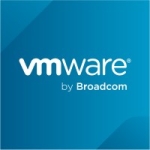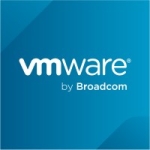
Infrastructure Expert at a tech company with 51-200 employees
RHEV is excellent due to cost, performance and security.
What is most valuable?
RHEV costs are very low compared to other Virtualization products. RHEV hypervisor supports up to 160 cores and up to 2 TB of RAM on a host machine. Performance and security are key advantages of RHEV. One of the new features are transparent huge pages, where kernel dynamically creates large memory pages for virtual machines, which improves performance for most workloads by reducing the number of times that memory is accessed. It is open source, which means that it is available for use by every one. There is a “Power user portal” feature that helps developer and IT staff with a self-service interface that allows them to provision virtual machines, define templates, and be an administrator to their own environment.
What needs improvement?
You need to buy support from red hat and you need to renew support every year in order to keep getting support from red hat. Some features are unavailable compared to leading visualization products. RHEV hyper-visor came later into the market than other leading visualization product.
What other advice do I have?
RHEV hyper visor is a cost effective solution for virtualization. Its work on kernel base virtualization systems. Its usage keep growing in the market.
Disclosure: My company does not have a business relationship with this vendor other than being a customer.
Senior Manager of Data Center at a integrator with 51-200 employees
One of the best open source virtualization techniques with enhanced security, performance, and cost advantage
Valuable Features:
Few pros of Red Hat Enterprise Virtualization Hypervisor are-
1) Kernel based virtual machine(KVM) virtualization technology
2) Good application compatibility and interface
3) Memory page sharing
4) NIC bonding
5) Multipath I/O
6) Efficient guest consolidation, live migration and HA
7) SELinux for enhanced security
Room for Improvement:
Few cons of Red Hat Enterprise Virtualization Hypervisor are1) Need to create virtual machine environment per node
2) Issues with clustering
3) Load balancing not very efficient and fails to utilize and distribute network resources.
Other Advice:
Red Hat Enterprise Virtualization Hypervisor is an enterprise virtualization solution made by Red Hat. It has been designed for intergration with Virtualization manager with servers. It has robust virtualization management features with proven enterprise security and performance. This Hypervisor is basically based on Kernel Based Virtual Machine. It has inbuilt features such as live migration, high availability (which manages server availability), and zero downtime for the virtual machines.
Disclosure: My company does not have a business relationship with this vendor other than being a customer.
We are using Redhat hypervisor for large organization - 50K plus. It is best virtualization solution we have used so far.
Buyer's Guide
RHEV
September 2025
Learn what your peers think about RHEV. Get advice and tips from experienced pros sharing their opinions. Updated: September 2025.
868,787 professionals have used our research since 2012.
Owner at Inventrics technologies
A scalable and cost-effective solution, but it should be made more user-friendly
Pros and Cons
- "The most valuable feature of Red Hat Enterprise Virtualization is its pricing."
- "The solution should be made more user-friendly."
What is our primary use case?
We use the solution to deploy our OS.
What is most valuable?
The most valuable feature of Red Hat Enterprise Virtualization is its pricing.
What needs improvement?
The solution should be made more user-friendly.
For how long have I used the solution?
I have been working with Red Hat Enterprise Virtualization (RHEV) for five years.
What do I think about the stability of the solution?
Red Hat Enterprise Virtualization is quite a stable solution.
What do I think about the scalability of the solution?
Red Hat Enterprise Virtualization is a scalable solution. Many users are using Red Hat Enterprise Virtualization in our organization, and we plan to increase the number of users in the future.
How are customer service and support?
Red Hat Enterprise Virtualization's technical support is customer-friendly.
How was the initial setup?
Red Hat Enterprise Virtualization's initial setup is straightforward and much easier.
What other advice do I have?
Two engineers are required to deploy and maintain Red Hat Enterprise Virtualization.
Overall, I rate Red Hat Enterprise Virtualization a six out of ten.
Which deployment model are you using for this solution?
On-premises
Disclosure: My company has a business relationship with this vendor other than being a customer. Partner
Consulting & Solutions, BA/BD in Enterprise IT on Open Source, Red Hat & EDB at KEEN AND ABLE COMPUTERS PVT LTD
Has a straightforward setup process and a centralized management for virtual machines
Pros and Cons
- "The platform is scalable, allowing for the installation of multiple nodes."
- "Specifically, enhancements in managing virtual machine migrations, cloning, and the creation of different VMs could further optimize its functionality."
What is our primary use case?
We use the product primarily for creating and managing virtual machines.
How has it helped my organization?
The product has benefitted our organization in terms of cost savings and efficient resource utilization by centrally creating and managing virtual machines.
What needs improvement?
While the platform has proven beneficial, it could be improved in some areas. Specifically, enhancements in managing virtual machine migrations, cloning, and the creation of different VMs could further optimize its functionality.
For how long have I used the solution?
I've worked with RHEV for around three years.
What do I think about the stability of the solution?
I rate the platform's stability an eight out of ten.
What do I think about the scalability of the solution?
The platform is scalable, allowing for the installation of multiple nodes. I rate the scalability an eight out of ten.
How are customer service and support?
The technical support services are good.
What's my experience with pricing, setup cost, and licensing?
RHEV offers pricing based on socket pair per-physical-machine licensing model.
What other advice do I have?
One aspect to note is that the platform's disaster recovery needs to be managed manually, underscoring the importance of having hypervisors on different physical servers for redundancy.
Given that RHEV is nearing the end of its product life cycle, I would advise exploring alternative solutions. However, it remains an enterprise-grade solution, akin to other Red Hat products, and is well-suited for virtualization needs in an enterprise environment.
Overall, I rate it an eight out of ten.
Disclosure: My company does not have a business relationship with this vendor other than being a customer.
Buyer's Guide
Download our free RHEV Report and get advice and tips from experienced pros
sharing their opinions.
Updated: September 2025
Product Categories
Server Virtualization SoftwarePopular Comparisons
VMware vSphere
Proxmox VE
Hyper-V
KVM
Oracle VM VirtualBox
Nutanix AHV Virtualization
Oracle VM
Citrix XenServer
VMware ESXi
Buyer's Guide
Download our free RHEV Report and get advice and tips from experienced pros
sharing their opinions.
Quick Links
Learn More: Questions:
- What are the differences between RHEV and VMware vSphere?
- When evaluating Server Virtualization Software, what aspect do you think is the most important to look for?
- VMware ESXi or VMware Workstation?
- VMware vs. Hyper-V - Which do you prefer?
- How does VMware ESXi compare to alternative virtualization solutions?
- Which hypervisor provides the best network performance at 10gb or higher?
- VMware has been positioned in the Leaders Quadrant of Gartner’s Magic Quadrant for four years. Agree/Disagree? Why?
- Which is the best server virtualization solution?
- Oracle VM vs. latest VMWare?
- Which virtualization platform would you recommend to a healthcare company with 1000-5000 employees?











Very good information about how many logical and virtual CPU can be supported on different types of virtualization. However, could you please guide us where there are any significant better performances or bottlenecks when the number of CPUs are quite large.